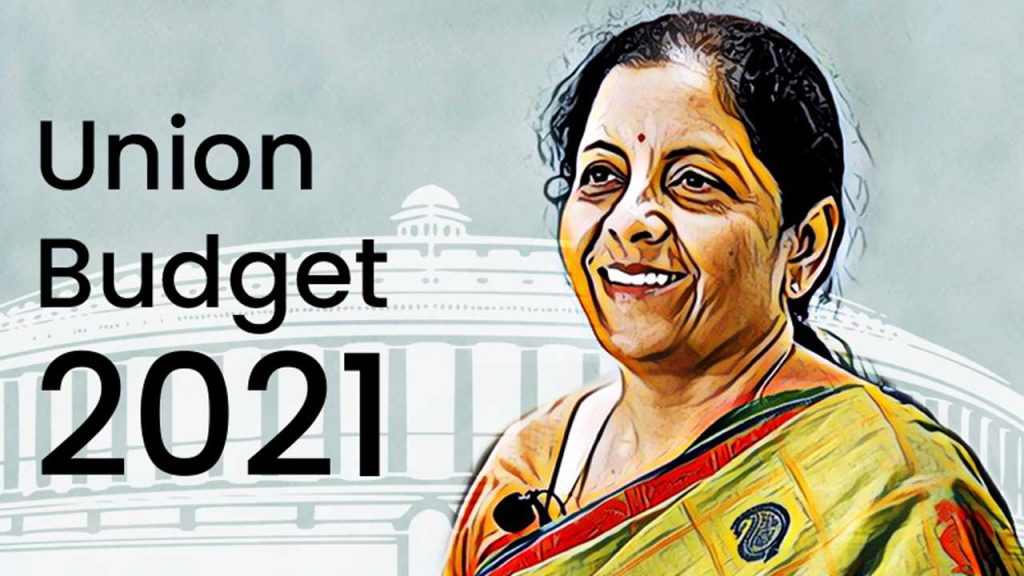Union Budget 2021 – One of the most highly anticipated annual policy updates by the government during the last quarter of the FY – the Union budget – is just around the corner. Only a few weeks to go, identical to last year, taxpayers are indeed looking for a budget that allows more money at their hands. In fact, this is taking into account the hardships and threats of the COVID-19 pandemic on their livelihoods and the economy as a whole.
From the government’s viewpoint, in contrast to the changes previously introduced, a range of steps, in particular, to improve domestic consumption of goods and services and to grow the economy at a faster rate, must be measured from a broad perspective.
The wish list mostly on personal tax front arising from the detrimental impact of COVID-19 as well as other situations is as follows:

Separate deduction for COVID-19 treatment
Actually, a few exemptions have also been authorized according to Chapter VI-A of the Income-tax Act, 1961 (the Act) for medical treatment for self-employed or disabled individuals with disabilities/severe disabilities (Section 80DD, 80U of the Act), medical treatment for specified disorders and illnesses (Section 80DDB of the Act). That being said, there really is no clear deduction under the Act to offset the cost of care for COVID-19 patients that are not compensated by any medical benefits.
Donations provided to the PM CARES Fund expressly intended to offer relief to COVID-19 are liable for a 100 per cent deduction from the 80G of the Act, but no equivalent deduction has been recorded for the costs borne in the management of the disease itself.
In view of the considerable expense of COVID-19 care in government or private hospitals, a specific exclusion of ₹1,00,000 or the real cost of treatment borne by the taxpayer for himself or his relatives, whichever is lower, can be deemed to be implemented under the Act to offer much-needed benefits to taxpayers, particularly where such expenses are not protected by a health insurance policy.
Provision for furniture by employer
The outbreak of the COVID-19 pandemic in March 2020 in several cases pressured companies to introduce Work from Home (‘WFH’) strategies for their workers mostly during lock-down time and post thereto. In this WFH scenario, some businesses have sought to develop the required facilities by supplying furniture (like desks, ergonomic chairs, etc.), high-speed internet, computers, desktops, stationery, etc. for ease of use in their employees’ residences in order to provide a favourable working atmosphere.
Some businesses have opted to give a flat payment to staff to offset the expense of those furniture/other products, whilst others have decided to offer a refund. While all allowances and refunds are required by the business requirement, these incentives have the ability to be taxed as a perquisite in the hands of workers.
Because this condition has still not been explicitly discussed in the Act or the Rules made thereunder combined with the assumption that WFH now seems to be a long-term standard on a wide scale, any tax relief unique to work from home scenario could be given to individual taxpayers and their employers.
Realignment of income slabs/ tax rates
For individual taxpayers under 60 years of age, the income tax exemption cap is INR 2.5 lakh p.a. This cap remained constant from the 2014-15 ‘FY’.
Last year, Budget 2020 offered certain flexibility for taxpayers by encouraging them to choose between the current tax system and the alternative voluntary new tax regime. Unnecessary to mention, a number of exemptions/deductions had to be waived for individuals to benefit from the new tax regime.
Although the current tax regime saw reduced tax rates, the final gain to the taxpayer was dependent on deductions/exemptions otherwise available for it.
Therefore, with a view to even further clarify this and improving the net disposable income, it can be contemplated if the basic exemption cap underneath the current tax regime may be increased to INR 5 lakh itself. This will also need to be calculated on the grounds of the potential amount of taxpayers (forecasted at 3.5 crores) that could be excluded from the obligation to file a required tax return.
Eventually, the other slab rates under both the current and the current administration will be modified on the grounds of the revised thresholds in accordance with India’s progressive tax rate structure.
Housing tax breaks
In order to jumpstart the traction in the real estate market, the Government may consider raising the standard deduction from 30% of Net Annual Valuation to 50% and/or increasing the existing deduction cap for interest payable on home mortgages to ₹4 lakh p.a.
Taxability of employer contribution to retirals
Section 17(2)(vii) of the Act was modified by the Finance Act 2020 to include an employer contribution of up to ₹ 7,50,000 a year to the Recognized Provident Fund (RPF), the Superannuation Fund and the National Pension Scheme (NPS). Similarly, the aggregate of such employer donations in excess of INR 750,000 was rendered taxable on a prerequisite basis.
There is a lack of clarification about whether this proposed cap is to be superimposed on the individual existing caps for each donation.
It is proposed that guidance will be given as to whether the existing individual ceiling for each employer’s contribution to the RPF/NPS (compared to 12% of salary and 10% of salary respectively) must be viewed prior to the implementation of the ₹ 7,50,000 monetary cap. In addition, it is important to explain the taxability of the donations (already taxable as alluded to above), which are regarded as perquisite in the year of donation and at the time of exit. In order to prevent potential successful double taxation, necessary changes should be made to the provisions dealing with the taxability of such defined funds.
Increase in deduction u/s 80C
The ₹ 1.5 lakh deduction cap under Section 80C of the Income Tax Act, 1961 (‘the Act’) for numerous common tax savings investments/expenditures (like the EPF, Children’s tuition Fee, the National Savings Certificate, etc.) has remained constant for about half a decade. Bearing in mind the global economic situation – promoting demand is among the government’s goals. With all that in view, if individuals are allowed to invest in expenditures such as school fees, accommodation, etc., the government may then consider raising this to ₹3 lakh p.a.



